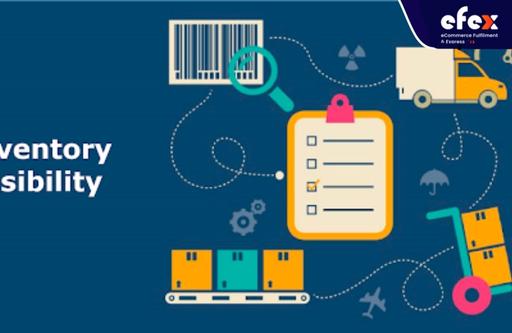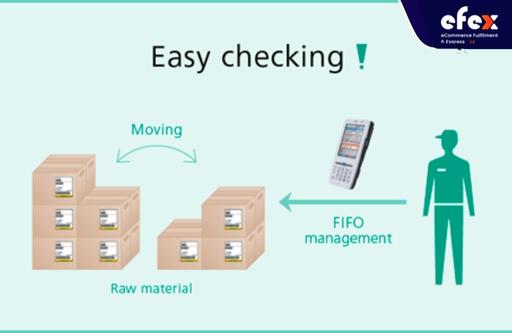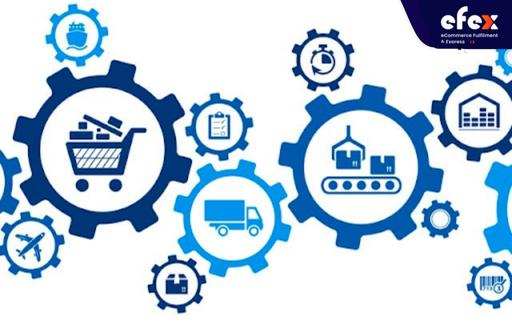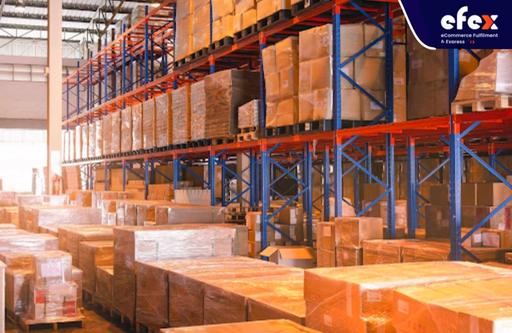
More Helpful Content
A warehouse management system (WMS) is required for every logistics system. The importance of warehouse management system is demonstrated through several features for your organization that can provide numerous benefits. Long-term benefits include decreased mistakes, cost savings, and improved customer service. Keeping track of a client’s inventory is a primary priority when they hire your warehouse to store items and fulfill requests. Warehouse management systems enable inventories to be closely tracked throughout the supply chain, allowing the order fulfillment process to be optimized.

Integrating a contemporary software-based WMS is critical for warehouse efficiency. A data-driven software tool serves as warehouse managers’ logistical eyes, informing them in real-time of what is happening everywhere within the facility and throughout the supply chain.
👉 Read More: 3PL Warehouse Management System: Meaning And Benefits
Warehouse management systems (WMS) improve warehouse flow by finding the most effective utilization of floor space depending on the task and material features. The usage of space and floor plan analysis is utilized in WMS deployments to estimate how space should be reasonably utilized and provide opportunities for decreasing waste of floor space and loss of time spent searching items.
👉 Read More: All Cost To Rent A Warehouse In 2023

This reduces the potential expense of unnecessary material flow, time-consuming installation, and retrieval. A warehouse can cut its operational expenses by determining the optimal locations to keep items, resources, or equipment. WMS systems may also aid in the maintenance of material rotation, whether using FIFO (first-in-first-out), LIFO (last-in-first-out), or FEFO (first-expired-first-out) procedures. The WMS may assist with any rotation rule that is desired.
LIFO allows for the most cost-effective utilization of space and mobility. FIFO or FEFO helps keep product quality from deteriorating in the warehouse. Some methods include extra fuzzy logic to reduce further transfers, such as goods that expire in the same month being deemed both eligible to be selected. A WMS is versatile and adaptable, making it simple to make any required modifications to retain the best inventory floor location selection, the selection of the proper stock to pick, and the management of physical mobility and worker performance.
A WMS will also provide you with accurate, real-time stock levels. This allows a corporation to more accurately forecast supplies and minimize backorders, resulting in happier consumers. Utilizing WMS automation combined with RFID, scanning, or other location-tracking technologies improves visibility on-site and eliminates non-WMS-enabled scenarios in which merchandise is lost, forgotten, or mislaid within the warehouse.

Warehouse management systems collaborate with corporate ERP and planning functions to give demand to forecasting services by giving detailed information about how specific items perform.
Transactions and information exchange reflect product need and seasonality. As a result of this data, planners may make sound judgments about which goods to change for the organization to enhance revenue or reduce losses.
By considering factors of workers’ skill levels, closeness in the equipment, warehouse, and available warehouse jobs, a warehouse management system may reasonably give the appropriate task to the right person at the proper time. One of the most significant benefits of increased worker use for the WMS is the reduction of trip time within the warehouse. The WMS can direct workers to the most impactful tasks while locating the best laborer for a certain activity.

Using manpower estimations, the system can allocate tasks daily and effectively generate timetables. Scanning items as they enter and transit through a warehouse can reduce the need for double-checking work, saving a lot of time and speeding up the process of recording.
Inventory products may be smoothly traced utilizing WMS by employing serial numbers, batch, and lot. Batch or lot numbers indicate a group of materials while serial numbers name a single item.

As said before, adopting WMS inventory management allows for complete traceability by linking accurate serial numbers, batches, or lots with inbound and outbound shipments. This material tracking capability lowers potential duplication, enables more exact inventory planning and distribution, and provides current recoverable information for future tracing, maintenance, or recall situations.
A WMS optimizes the internal operations of a warehouse, which may subsequently be extended to the larger supply chain. A warehouse management system automates the entire warehouse operation, from inbound receipts to outbound deliveries, increasing operating efficiency and lowering expenses. Warehouse personnel accomplishes speedy and precise shipments by decreasing or eliminating non-productive or superfluous activities. These time and cost savings, as well as enhanced procedures and information, may subsequently be passed on to external and internal partners, allowing them to improve their own operations.

Improved data may lower risks and boost dependability, which benefits shippers, suppliers, and customers. Data may be shared and exploited back to an ERP, a customer, or a transportation management system (TMS). The product can reach its end consumer faster, allowing upstream partners to optimize planning. Inventory fulfillment services may be linked to inventory management, allowing for more efficient operations while lowering time and inventory carrying costs.
Warehouse management systems allow for the usage of further automation technologies within a warehouse. Mobile devices can help with the shift from paper to electronic work and activity recording by automating internal work assignments. This streamlines operations boosts scalability and assures data accuracy. Mobile coupling with the WMS system can enhance the input process by providing access via portable mobile devices.
Automation, via improved methodologies, contributes to the ongoing growth of present processes. There are numerous levels of automation available, involving automated pick and pack, analytics-driven actions, robots, and artificial intelligence. Warehouse systems help these endeavors by supplying the foundational components for collecting, documenting, and communicating actions.
Sensors, pick-to-light, automated carousels, barcoding, and voice, for example, may all boost throughput when coupled with a WMS by controlling picking and packing activities. Automated conveyors and robots can aid in the optimization of operations and the elimination of bottlenecks.
Optimal arrivals and departures plan is set possible by a warehouse system that can modify inventory and equipment flows. When inventory is due to arrive, the exact day and time may be adjusted by taking existing staff and storage facilities into consideration. With WMS systems, it is possible to arrange both receiving dock doors and outgoing shipping docks.
To better enhance supply chain activities, certain WMS solutions integrate into TMS. WMS could also assist managers in more effectively selecting and packing things by letting them choose between batch, zone, or wave picking, which avoids any bottlenecks or issues caused by traffic or bad employee placements.
These choosing efficient solutions reduce client order cycle time, improving customer relations. Customers can also obtain early warning of shipments and how the supplies are arriving thanks to the inventory packing and tracking choices. The WMS system improves the ability to connect consumers with advanced shipment notices.
Warehouse management systems, as a significant technical instrument, are intended to facilitate ongoing development. The system may be installed in stages to enable regular upgrades with newly developed capabilities, allowing warehouses to remain efficient while keeping up with current improvements. This also helps the warehouse to gradually embrace new procedures and improvements. Furthermore, if the WMS is cloud-based, it may update rapidly, reducing the need for big, expensive IT staff.
Inventory management is critical for all parts of a firm. If you do not have adequate goods, you risk losing sales during a stock-out. On the other side, possessing too much may be detrimental in various ways. Without WMS systems, you can face incurring these expenditures as well as additional inefficiencies. There are several disadvantages to not implementing an efficient system in place.
You have almost no transparency of your inventory if adequate management is not in place. Without information on your inventory’s amount and quality, you will waste money on things that are not beneficial for your company and incur charges.
It is impossible to track how and where your items travel if you do not have access to real-time information. Theft, outmoded merchandise, and late delivery are all possibilities.

Stock shortages and overstocking result from a lack of balance. Both circumstances might result in lost earnings and unnecessary expenditures. Thus, your inventory cannot balance smoothly. This might result in a scarcity of key items or an overabundance of less important ones. However, with the right tools, you can prevent such situations.
Instead of scanning a barcode, entering data manually will waste lots of time. Your human capital will devote more time to lesser tasks. Some examples of things your system should do instead include providing reports, updating inventory, and creating labels. With a system, you may devote this time to other tasks.

Customers want to put in as little work as possible to ensure that their purchases are filled out accurately. Customers will be dissatisfied if they gave to wait a long time for you to fulfill their requests appropriately. The more work people must use, the more dissatisfied they get. Customer loyalty suffers when companies are unable to ship or deliver on schedule. Furthermore, late or inaccurate delivery can wreak havoc on your working relationships.
Repeatedly doing duplicate activities might contribute to staff inefficiency. In reality, automating such tasks saves both their time and your money in the long term. A WMS would assist in freeing up labor for other purposes.

Another significant effect of not having inventory management is a lack of data. In any company, data and analytics are critical to decision-making. Making the proper decisions is difficult without visibility into your inventory levels and utilization. Then, you will lack confidence in your decision-making if you do not have the resources to assess inventory patterns. Having access to statistics stats can help you make better decisions.
When a system lacks fluidity, your storage area gets congested and difficult to operate inside. A warehouse management system can even help you manage your inventory. Without one, you lose flexibility and your facility becomes tough to work in.
👉 Read More: 5S Of Lean Warehouse Management: Definition, Benefit And Example
The importance of a warehouse management system extends beyond delivering real-time data. A well-designed warehouse software system also monitors and distributes historical data, which may assist managers in forecasting future requirements. This database enables unparalleled inventory control, ensuring that current demands are constantly satisfied and customer service is optimized.


